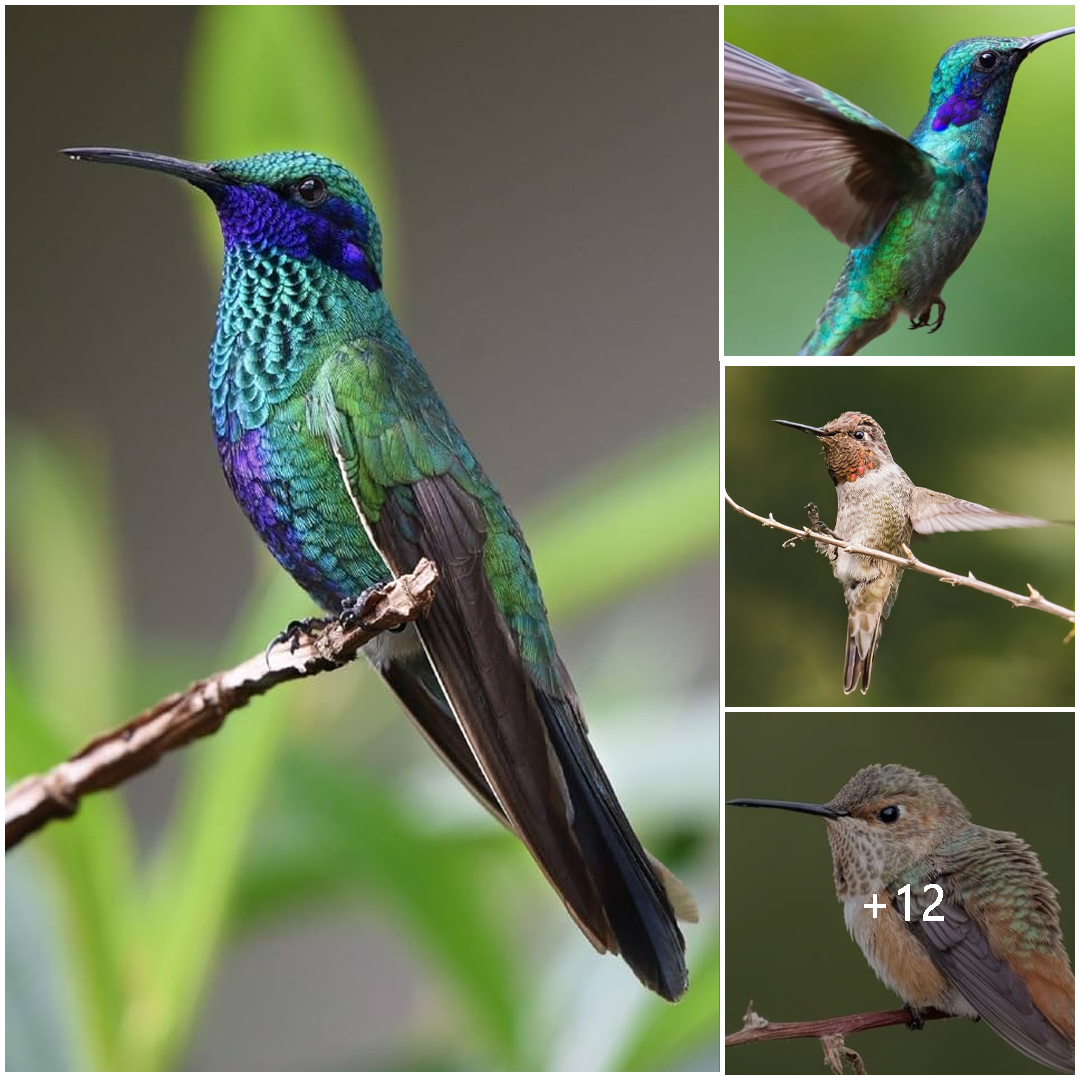
The hummingbird is a fascinating and unique bird known for its small size, incredible agility, and distinctive hovering flight. Here is some information about hummingbirds:
Physical Characteristics:
- Size: Hummingbirds are among the smallest of birds, typically measuring 3 to 5 inches (7.5 to 13 cm) in length.
- Weight: They are incredibly lightweight, with most species weighing between 2 to 20 grams.
- Plumage: Hummingbirds often display vibrant iridescent plumage, which can appear in various colors depending on the angle of light.
- Wings: Their wings beat incredibly fast, usually around 50 to 80 beats per second, enabling them to hover in mid-air and fly in any direction, including backward and upside down.
- Beak: Hummingbirds have long, slender, and specialized bills adapted for probing flowers and extracting nectar.
- Feeding: They primarily feed on flower nectar using their long tongues, but they also consume small insects and spiders for protein.
Habitat and Distribution:
- Hummingbirds are native to the Americas, with the majority found in Central and South America. Some species also inhabit parts of North America and the Caribbean.
- They occupy diverse habitats, including forests, grasslands, deserts, and high-altitude regions. However, they are most commonly associated with tropical and subtropical environments.
Behavior:
- Hovering: One of the most remarkable features of hummingbirds is their ability to hover in mid-air while feeding, thanks to their rapid wing beats and specialized flight muscles.
- Feeding: Hummingbirds have a high metabolism and must consume large amounts of nectar to fuel their energy-intensive flight. They visit numerous flowers each day, often following specific routes known as “traplines.”
- Territoriality: Male hummingbirds are fiercely territorial and will defend feeding territories vigorously, engaging in aerial battles with intruders.
- Migration: Many hummingbird species are migratory, traveling thousands of miles each year between breeding and wintering grounds. Some species undertake remarkable journeys, crossing vast stretches of ocean or traversing mountain ranges.
Reproduction:
- Courtship: Male hummingbirds perform elaborate aerial displays to attract mates, including dives, loops, and pendulum-like swings.
- Nesting: Females build tiny cup-shaped nests using plant fibers, moss, and spider silk, often attaching them to branches or foliage.
- Eggs: A typical clutch contains two pea-sized eggs, which the female incubates for about two weeks. After hatching, the chicks remain in the nest for several weeks until they fledge and become independent.
Conservation:
- Threats: Hummingbirds face various threats, including habitat loss, climate change, pesticide use, and competition for food sources.
- Conservation Efforts: Efforts to conserve hummingbird populations include habitat preservation, establishment of protected areas, public education, and research on migration patterns and breeding ecology.
Overall, hummingbirds are remarkable birds with extraordinary adaptations that allow them to thrive in diverse ecosystems. Their beauty, agility, and ecological importance make them beloved and iconic creatures in the natural world.





